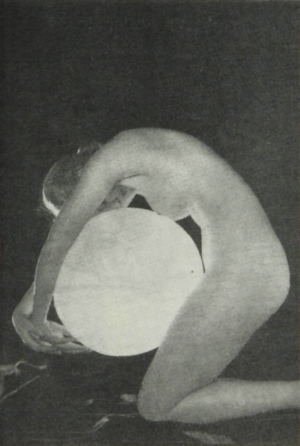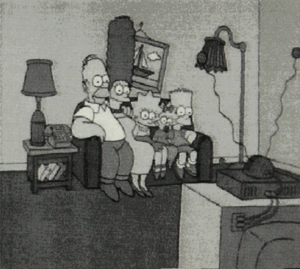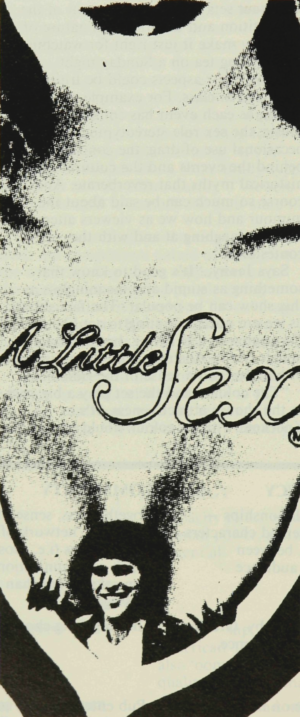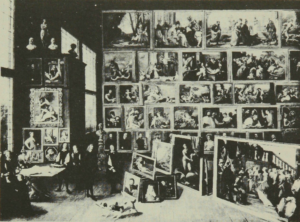Intro. paragraph
The Primary Teacher may be forced to give therapeutic lessons or exercises in Film Appreciation after some visual experience intrudes on the classroom scene. The following classroom incidents happened a few years ago, at a time when a series of earthquakes struck Chile.
Film appreciation in the primary school
‘A’: the Morning after the Night before – an experience in Grade Three.
“Boys and girls, last night I saw the earthquake on television.”
Cries of “So did I”, “I did too”.
Morning talk had begun. The children were young and found it hard to be articulate about the things they had seen and the emotions they felt.
“My mother said the end of the world was coming”, volunteered a boy.
“There were big cracks in the ground. If you fell in they would never find you again”, said another.
There was little else the children could say then, but the subject had been aired and one felt that it would crop up again. The interval between milk and playtime was the recognised time for private confidences. A small group lingered by the teacher’s table. “My mother said it’s the end of the world”, said that boy again.
A quiet little girl now spoke for the first time, “My mother said it’s the devil pushing up under the earth.”
Theoretically there is a division between the sacred and the secular in our schools, but it is easier to separate the two on paper than it is in the living child. The teacher must not create any division between child and parent, yet fear has to be met, and ended if possible.
“Perhaps your mother was wrong”, I said, “Has the world ended yet?” “No”, said the boy but he sounded quite unconvinced.
“We all make mistakes”, I said, “I bet you have sometimes been blamed for things you didn’t do.”
This brought a smile from the boy and the girl, and a couple of other children who were standing around. Things were moving in my favour but fear needs a deeper attack than this. I gave the children a copy of the morning paper and told them that there were some pictures of the earthquake inside it. Would they cut out the pictures during recess and paste them on cardboard? We were going to have Social Studies in the afternoon so the pictures would be useful.
Facing up to the things you fear is the first move in the direction of ridding yourself of them. The girl turned over the pages and we looked at the photographs together. “You must have been scared when you saw this on T.V.”, I said, “but it doesn’t look so bad in the paper, does it? Well, cut it out and paste it on the cardboard while I have a cup of tea in the staffroom. We will talk about them this afternoon.”
Scissors and paste are a good therapy. Cut out the thing you don’t like, hold it in your hands, take control of it.
When the afternoon came we placed the pictures on the blackboard ledge and the lesson began. Most of the children had seen the T.V. film of the earthquakes the night before and they were eager to find out what the lesson would bring forth.
The best way to put out a bushfire is to burn a break ahead of it. Quench fear by using an opposing force.
“Who would like to live near a volcano?” A rhetorical question, but an ever interesting one. Children are always interested in elephants, sausages and volcanos. They are frightened when they see and hear, but can bear things when only the quiet spoken word is used. We talked about volcanos in Indonesia and I told the children that Indonesian people depended on the volcanic ash to make their plants grow strong and well. This was familiar to the children because they had all seen their parents spread the ashes from the fireplace onto the vegetable plots at home. The people in an Indonesian village had a good knowledge of volcanos and could move out of the way when an eruption took place, not that this happened very often.
By the time volcanos had been talked about and there were elaborate sketches of the internal workings on the board, the devil had been layed and we almost called the lesson “Our Friend the Volcano”.
Now it was time to tackle the earthquake. First of all things had to be put in their correct perspective. Tell the children that T.V. stations and newspapers show only the most interesting of the pictures that they receive. Most parts of the afflicted cities were not affected at all, so the homeless people could soon be helped.
The problem was really one of stopping earthquakes from cracking buildings. Now for Frank Lloyd Wright and the earthquake-proof Imperial Hotel in Tokyo to bring hope to the story and a close look at the pictures from the morning newspaper. These were held by the ‘cutters-out’. They were given full credit for their next cutting-out and excellent pasting and printing. The pictures could be pinned on the display board. Earthquakes were frightening in the morning, but by the afternoon they had become the root cause of public praise. A few weeks late the last demon could be chased out by letting the children consign the pictures to the rubbish bin. Pleasure in making; pleasure in destroying a once fearful thing.
Our film appreciation for the day had ended and the children went home to continue their diet of visual and aural images. One hoped that they would see not more frightening things for a week or two.
[from Film Appreciation Newsletter vol. 1, no. 4]





